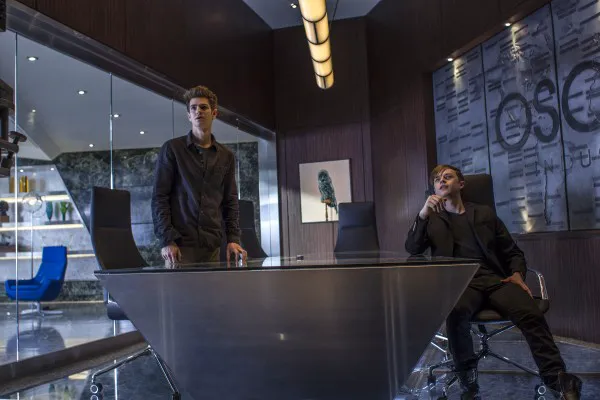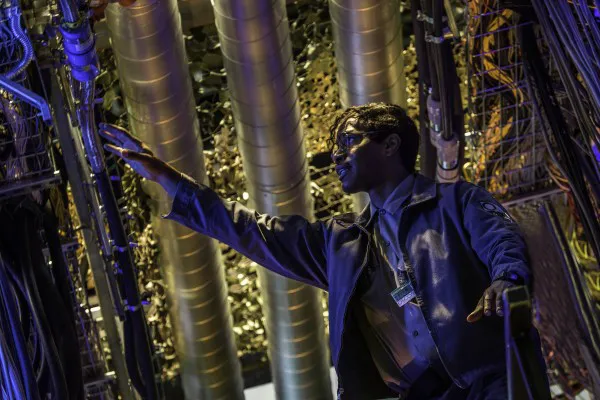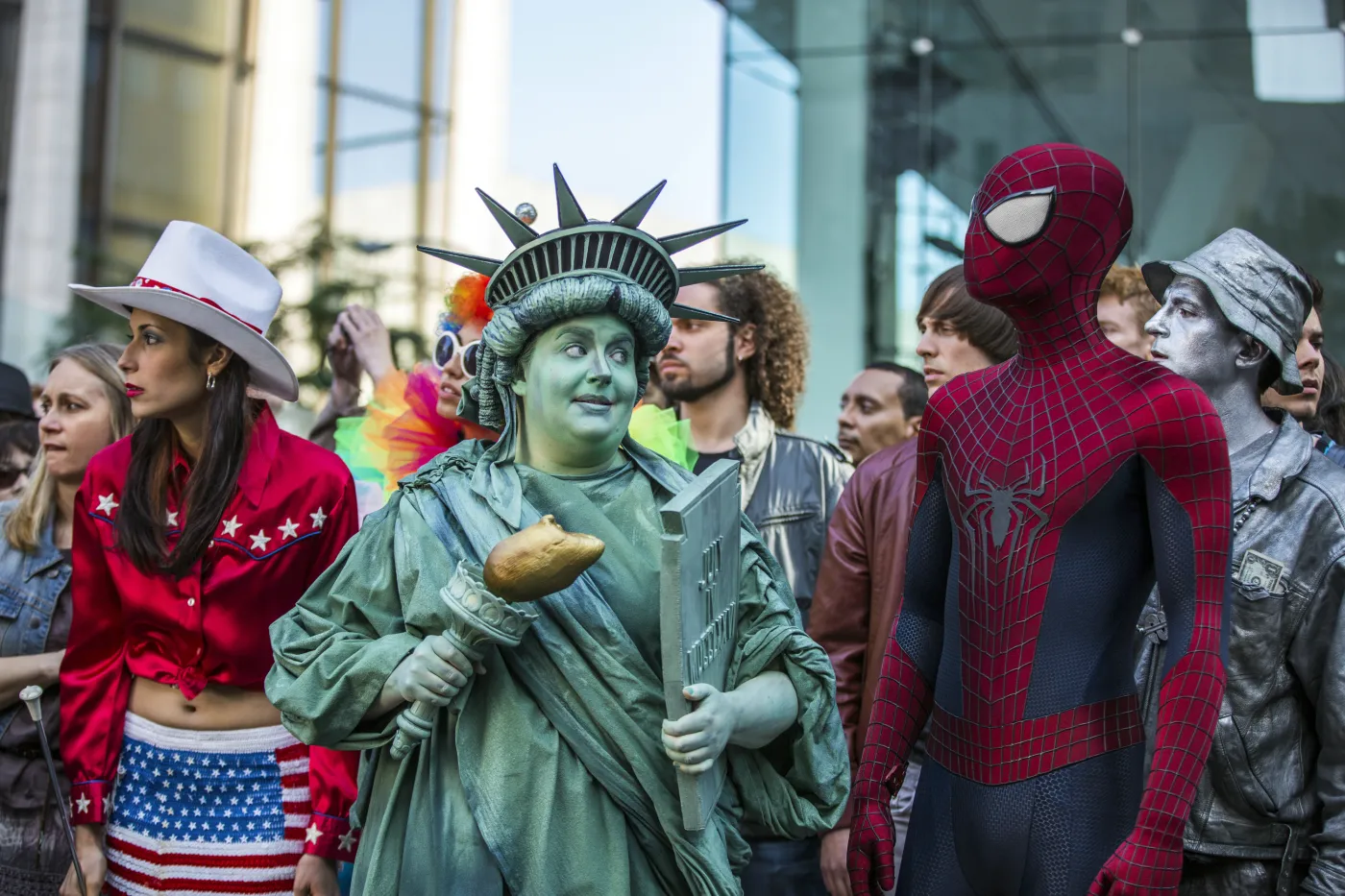A Grand, Yet Disappointing Sequel to a Promising Comic Book Blockbuster
After graduating from high school, Peter Parker (Andrew Garfield) breaks up with Gwen Stacy (Emma Stone) because he doesn’t want to involve her in his deadly superhero life. Meanwhile, Oscorp engineer Max Dillon (Jamie Foxx) falls into a tank of genetically modified electric eels and transforms into a supervillain who controls electricity, and Peter’s childhood friend Harry Osborn (Dane DeHaan), who has returned to New York and inherited Oscorp, begins searching for a cure for the genetic disease that killed his father.
“Spider-Man gives people hope,” says one of the characters in “The Amazing Spider-Man 2.” Indeed, two years ago, “The Amazing Spider-Man” gave viewers hope that in the rebooted version of the legendary superhero’s adventures, Gwen Stacy would play a much more significant role than Mary Jane Watson did in Sam Raimi’s trilogy. “Could Spider-Man have an almost equal partner?!” thought everyone who despises the usual Hollywood treatment of heroines in “male” blockbusters with bated breath.

But man proposes, and Hollywood disposes, and the new “The Amazing Spider-Man” crushed these sweet dreams in the very first conversational scenes. Peter and Gwen begin the film not with collaboration, but with a breakup. And although they then behave like Ross and Rachel from “Friends,” sometimes getting together, sometimes breaking up again, they spend most of their time apart, and they don’t form an anti-criminal and friendly-romantic duo. Of course, one can understand Peter, who wants to keep Gwen away from super battles. But her mind (not to mention the girl’s other virtues) could have greatly helped the hero throughout the film. And so Parker suffers alone, and Emma Stone’s fans are tormented by the fact that Hollywood, since “Easy A,” cannot find a leading role for the star that is adequate to her charisma, talent, and charm. At least Kirsten Dunst in Raimi’s films participated in love triangles, but Webb cannot offer Stone anything other than regular assurances that Peter should not listen to the late Mr. Stacy (recall that in the culmination of the previous film, Gwen’s father took a promise from Peter that he would not involve the girl in deadly adventures).

Paul Giamatti got a role in the film because he once said on a television talk show that he would like to play the Rhino (Aleksei Sytsevich) from the Spider-Man comics.
Villains
Well, the guy’s dead on the love front. What about enemies? There are three of them in “High Voltage”: the crazy Russian gangster played by Paul Giamatti, who appears in the prologue and epilogue, the brilliant electrician, but otherwise stupid Dillon, and the enterprising but hysterical Osborn Jr. There is nothing special to say about the first (this is a cameo, not a full-fledged character), and the second actively claims the audience’s sympathy, but does not achieve it, since he behaves like a psychopath even before he turns into a blue monster and begins to broadcast about his divinity. Max could have been an interesting character, but Fox played him too cartoonishly.
Plus, the villain’s abilities are so extreme that his fight with Spider-Man turns out to be a feast of visually spectacular but emotionally cold computer graphics (the scene is not helped at all by the fact that we do not see Peter’s face hidden under the mask and cannot determine how difficult it is for him to catch lightning). Surprisingly, the best scene with Electro is the one in which a German “mad scientist” with painted lips tortures the villain imprisoned in a prison for criminal psychopaths. Because Fox’s character gains humanity only against the backdrop of an even more insane environment.
To film the battle in Times Square, the decorators built a life-size replica of the northern part of New York’s most famous square.
As for Harry, his line is perhaps the best in the film - the most emotional, dramatic, and morally ambiguous (and therefore thought-provoking). But it has several significant problems. First, the hero’s cries that he will die if he does not find a cure “this second” are absurd, since his father with the same disease lasted 60 years. The 20-year-old billionaire has plenty of time, money, and resources to slowly complete the work begun by Osborn Sr. Secondly, if Jamie Foxx at the beginning of the film looks like a comically stereotypical “nerd,” then Harry throughout the film looks like a comically stereotypical hipster, and it is much more difficult to relate to such a character than to the hero of the same name played by James Franco in Raimi’s films. Thirdly, it is hard to believe that adult characters who last saw each other as small children suddenly start being friends again. They have changed too much since then. Finally, it is not easy to get rid of the thought that Peter behaves with Harry like a villain and a traitor, and Spider-Man should not turn into Walter White.

Conclusion
However, the strongest blow to the gut the audience receives in the finale and epilogue. The main part of the film ends with a tragedy that could have become a sad, but still excellent, final ellipsis - an invitation for viewers to grieve in real time, over the months and years that separate us from the completion of the trilogy. But Hollywood is Hollywood, and the epilogue, after two minutes of screen grief, again turns Spider-Man into the cheerful and ironic joker he was at the beginning of the film. As if nothing significant had happened. As if what happened is just a stumble on Spider-Man’s path. Is that really possible?! This is a betrayal of both the audience and the characters.
As a result, the best way to watch “High Voltage” is to leave after the initial action scene is over. It turned out to be funny, unpredictable, spectacular, emotional, much more realistic than the culminating battles, and wonderfully using the possibilities of 3D shooting. This is an excellent, flawless fragment - but everything else in the film is less often delightful than disappointing.